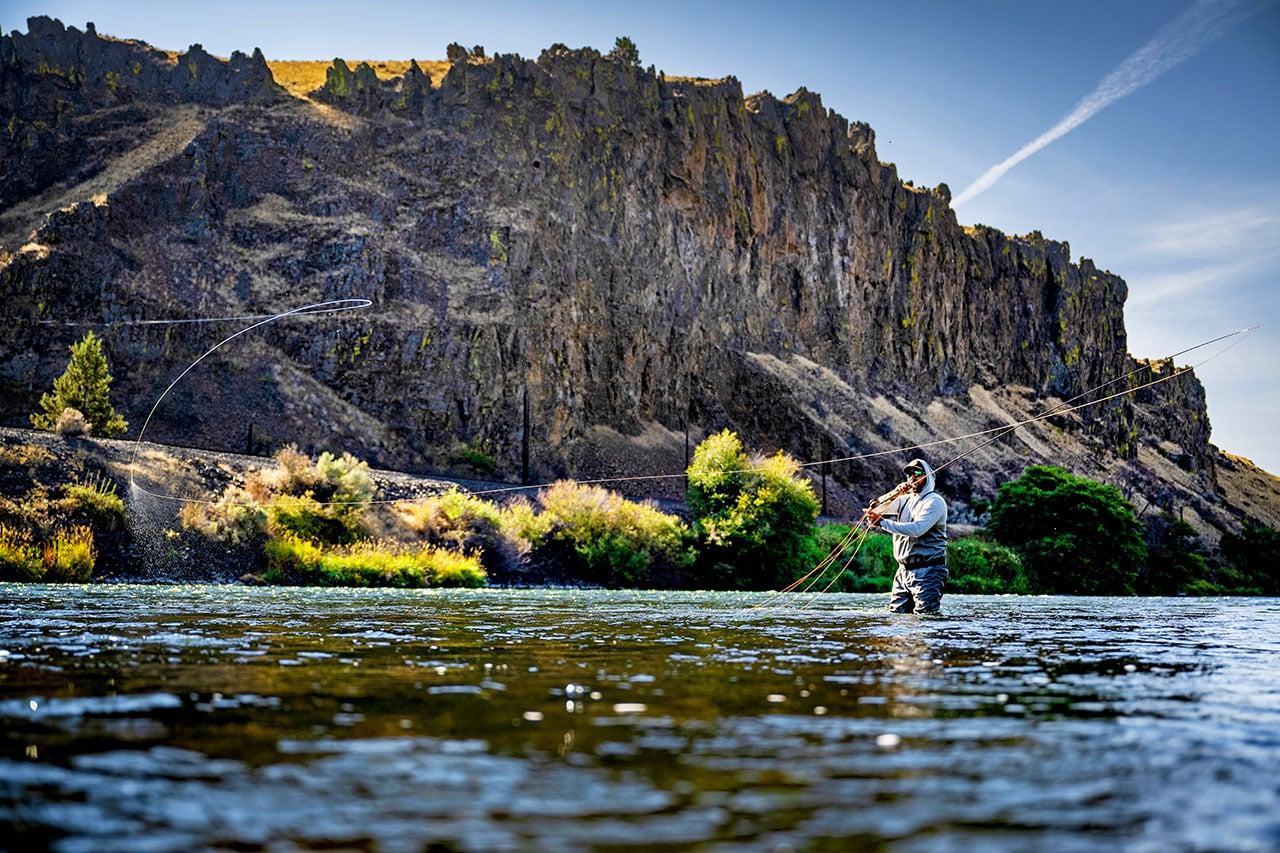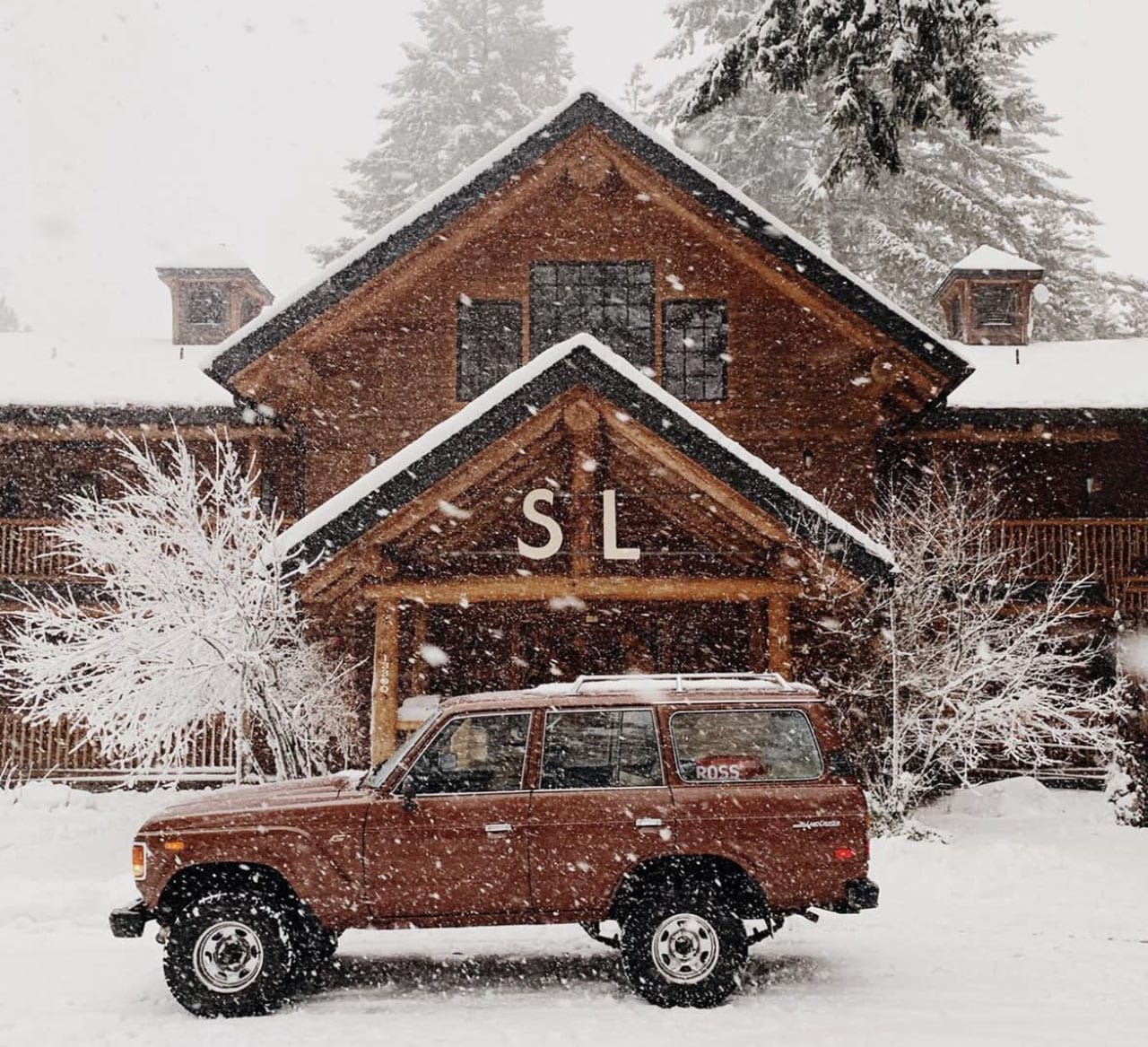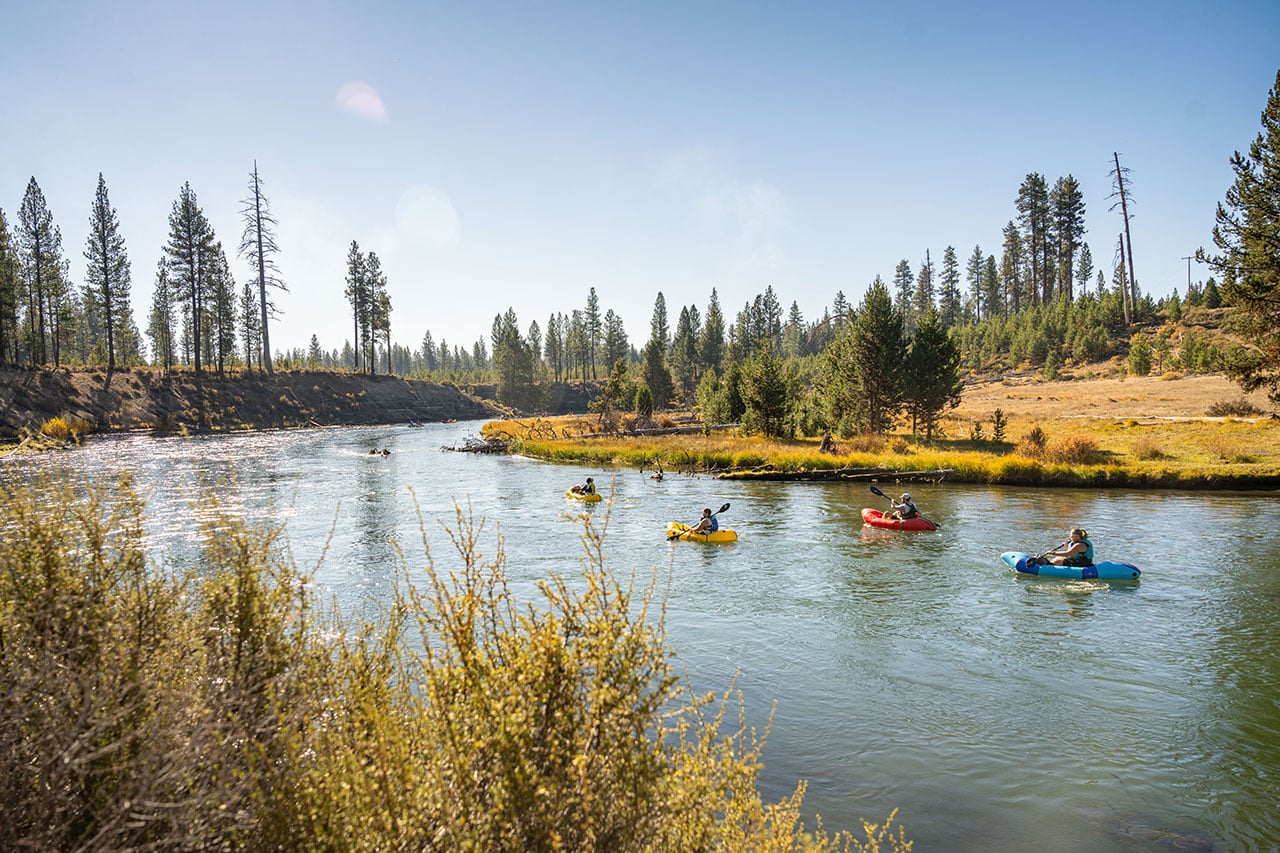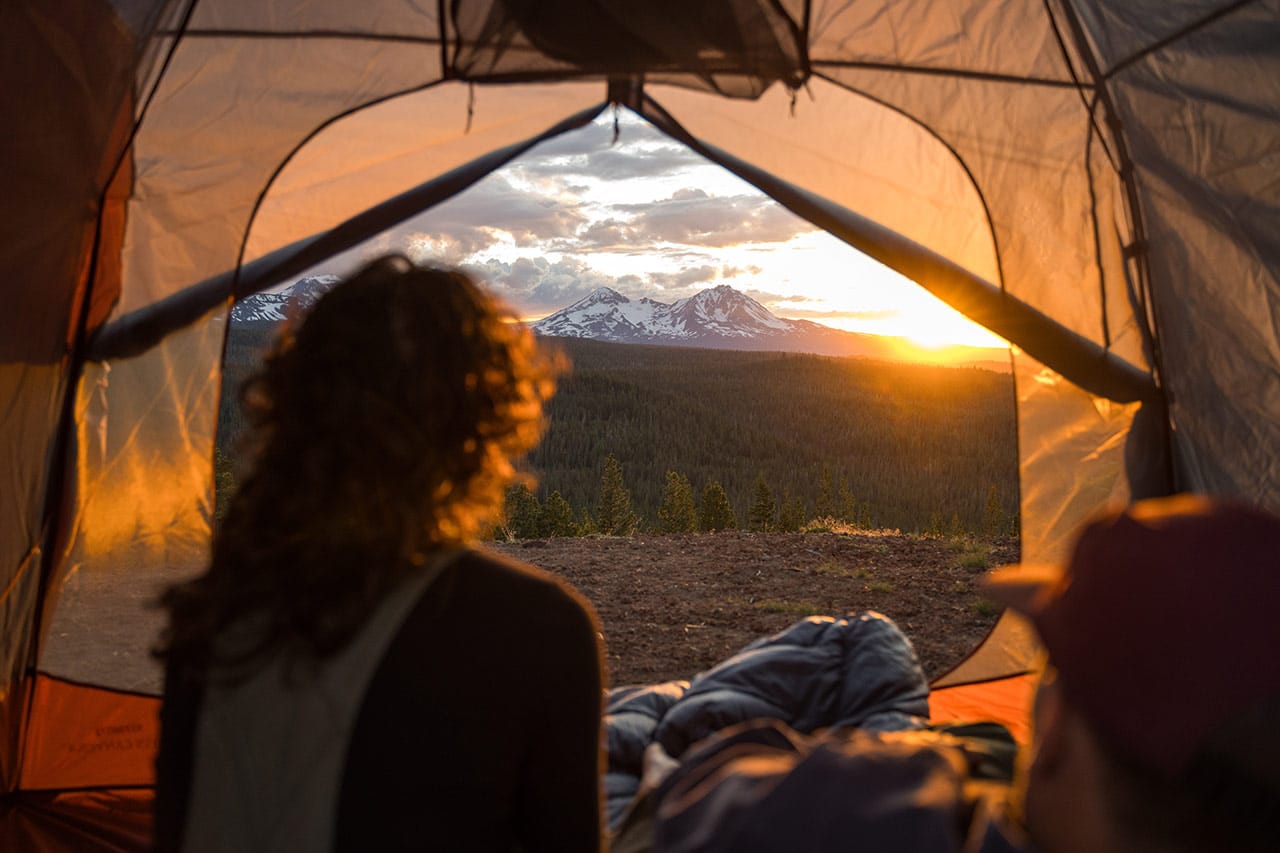Winter fishing in Central Oregon falls into the Big Risk, Big Reward category. The rewards, which outweigh the risks of cold temperatures and slick footing, center on a Zenlike tranquility of beautiful snow-lined rivers while testing one’s fishing skills against the genetically wired instincts of a fish in the middle of winter.
Trout, like other fish, remain active in winter; however, cold water temperatures slow their metabolism. They still prey on the larval stages of aquatic insects, scuds (small shrimplike crustaceans) and smaller fish. Understanding the river’s biology and a trout’s seasonal dietary preferences are important additions to any angler’s winter tackle box.
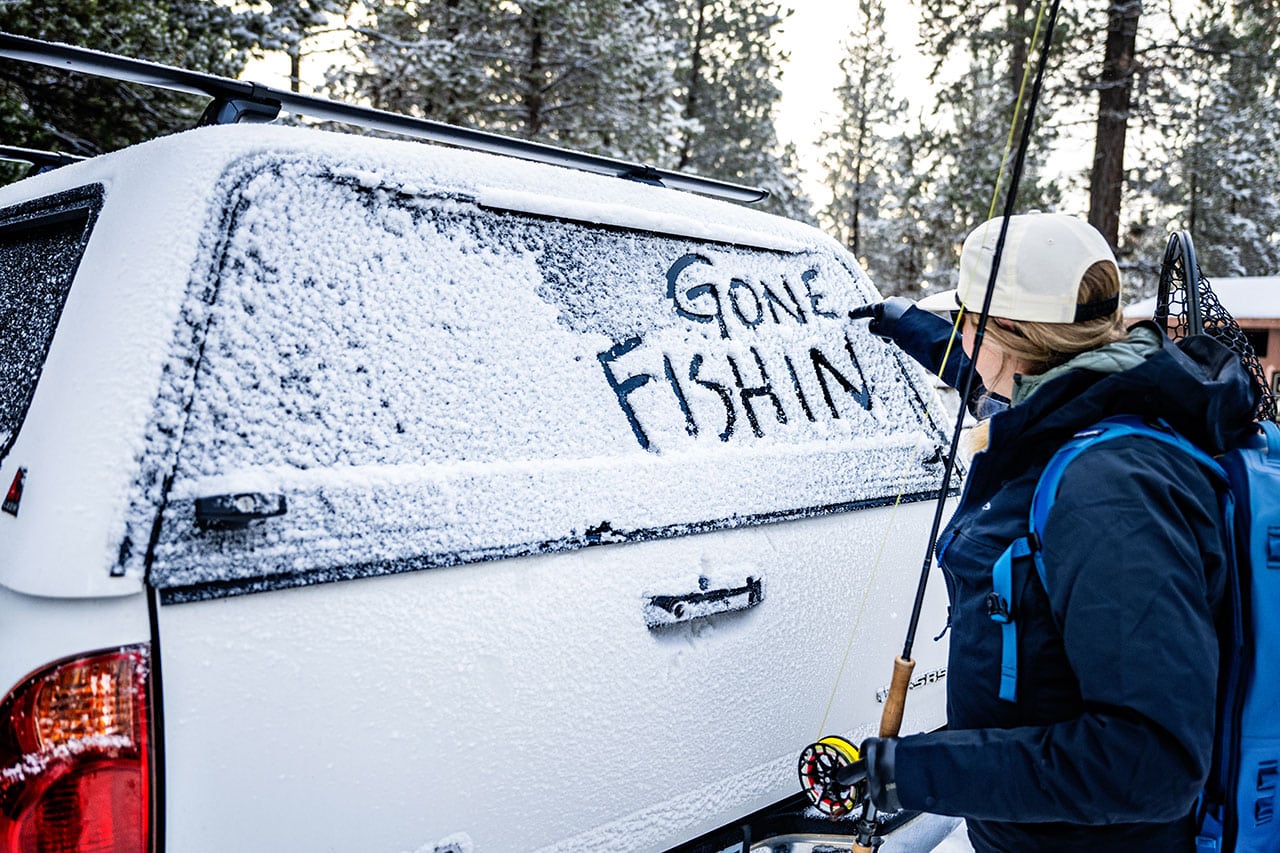
Salmonids 101
Not all trout are “trout,” but rather are representative of the salmon family. Rainbow, brown and redband trout, as well as steelhead, are “true trout.” Steelhead differ in that they are a “sea run” form of either rainbow or redband trout, meaning these fish migrate from freshwater to the Pacific Ocean where they live for several years before returning to their birthplace or natal stream to spawn. Kokanee, common in Central Oregon, are a non-anadromous form of sockeye salmon, meaning they do not migrate to the ocean. Brook, lake and bull trout may bear a trout name but they are char, a group of fish defined by a lack of teeth in their upper palate, and they bear various light-colored spots on their dark backs. Another salmonid, the mountain whitefish, is also found throughout Central Oregon.
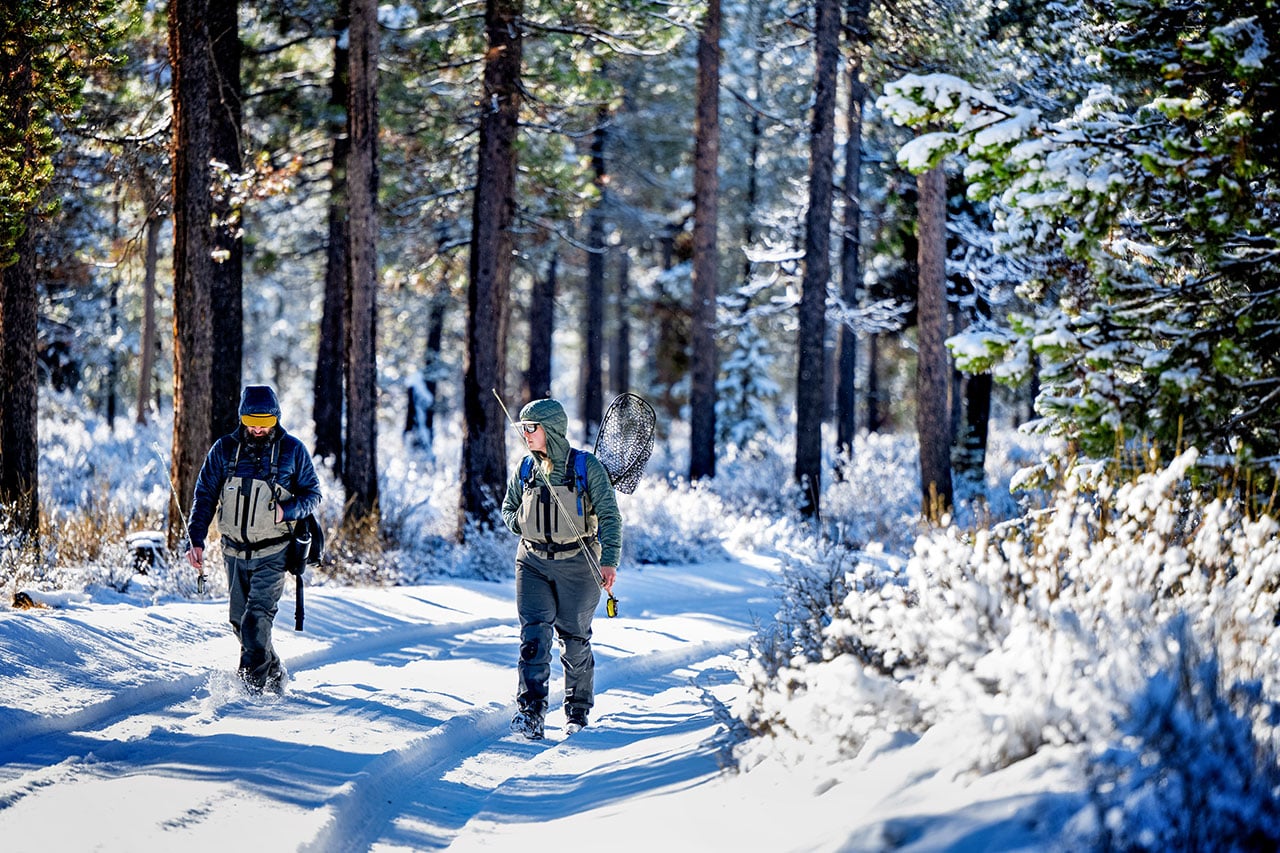
Winter Fly Fishing Locales
The Metolius River is a spring-fed river with its headwaters in the shadow of Black Butte near Camp Sherman where bull, rainbow and brown trout are found. The river runs north, clear and cold, gliding past the Green Ridge escarpment before reaching Lake Billy Chinook. Spectacular scenery is a bonus to this world-class fishery. Local angler Kacey Davey, a public information officer for the Oregon Department of Transportation, became hooked on fishing for bull trout, known as the “grizzly bear of the fish world,” along the Metolius in winter. She uses big streamers—artificial flies she creates with feathers that imitate small fish.
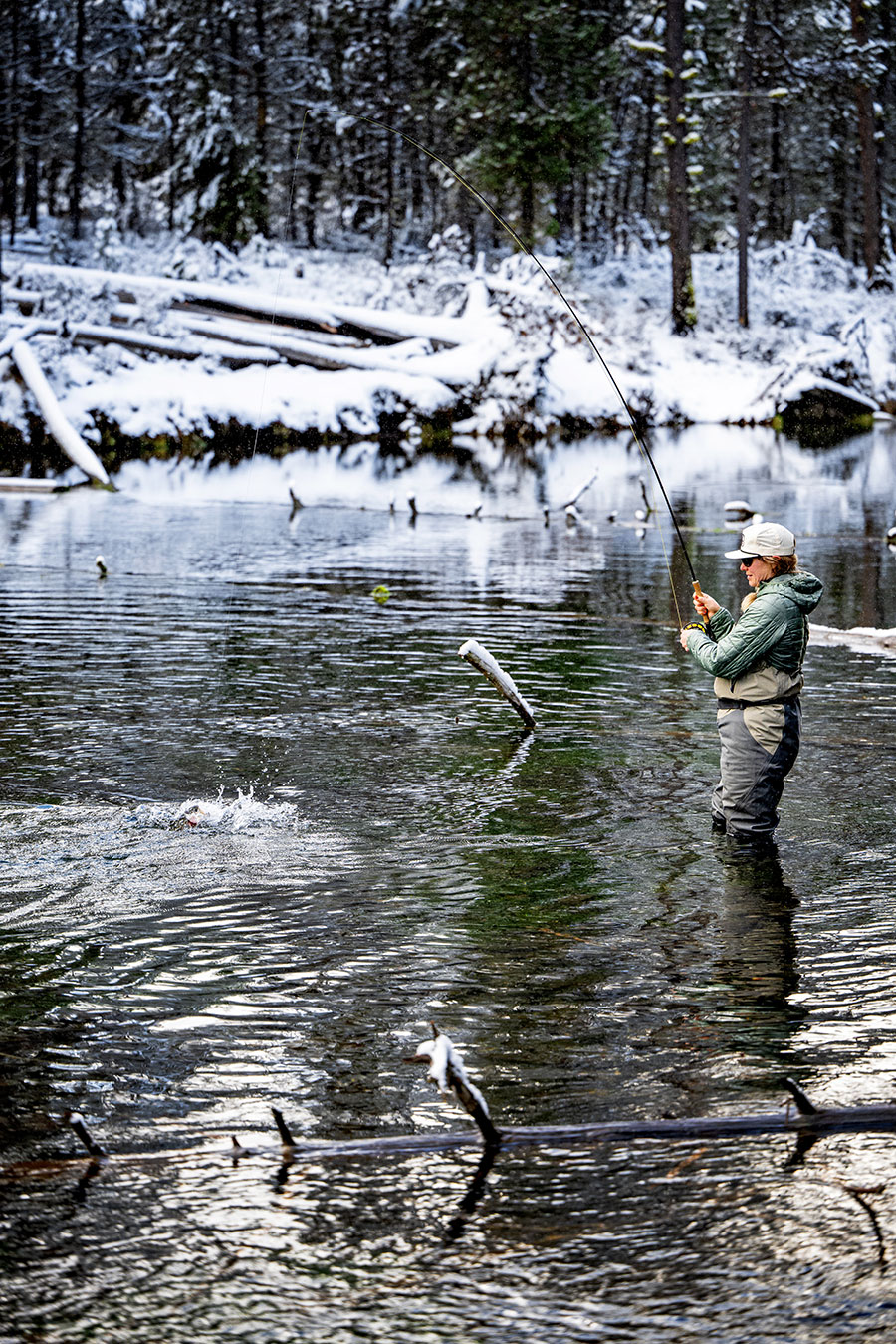
Both the Deschutes and Crooked are two tailwater rivers, meaning river flows are dam-controlled. The 9 miles below Bowman Dam on the Crooked has deep pools and pocket water—smooth water above and below a protruding boulder—to fish even during the low flows. Nymphing, lightly weighted artificial flies that sink and drift along the bottom of the river, is the preferred method for trout and mountain whitefish during the cold months, especially in the absence of insect hatches.
The Deschutes River is the premier rainbow trout fishery in Oregon; the Lower Deschutes Back Country Byway, from Maupin to Mack’s Canyon, is more angler friendly than the upper stretches in winter. Fall River is spring fed, resulting in clear and cold water year-round with many downed logs that provide cover for trout.
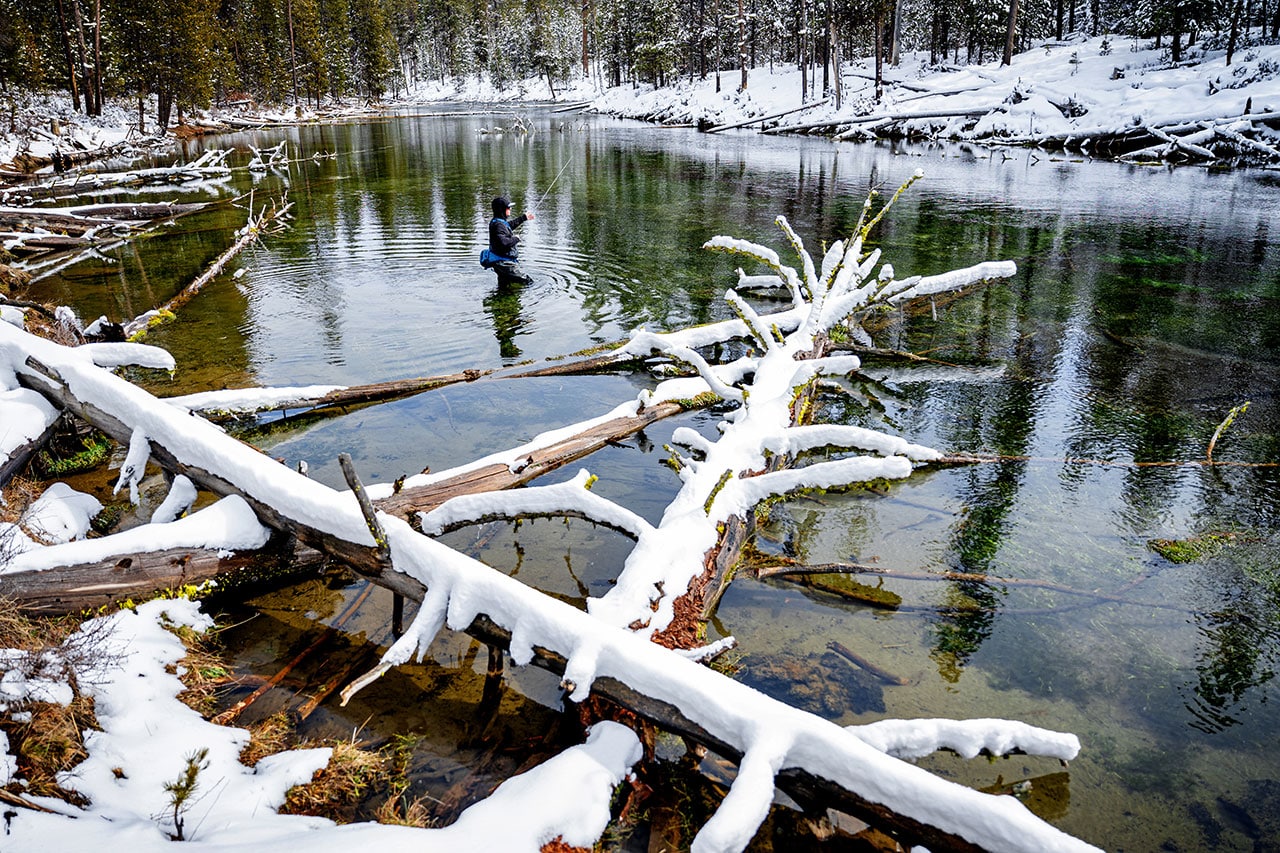
An Ice Fishing Option
“Diamond Lake is one of the coolest spots to ice fish because everything is right there at the lodge, and it’s a really fun place to take the kids,” said RA Beattie, a filmmaker with Off the Grid Studios, “You can walk right out of the lodge onto the ice.” Ice fishing requires minimal gear: a warm-water rod and reel with lightweight line, a tackle box, some bait and a chair or bucket to sit on. An ice auger bit attached to a power drill can be used for making holes in the ice. Powerbait works well for rainbows or tiger trout, a unique hybrid species named for its tigerlike stripes and aggressive behavior. These catch-and-release fish were stocked in Diamond Lake to prey on invasive bait fish.
Safety Tips
Before heading out, check myODFW’s Recreation Report and Oregon Trip Check online for seasonal closures, license requirements and road conditions. Stop by one of the many fly fishing shops in the region for information and gear. For those new to winter fishing, Beattie recommends hiring a guide to be safe and to enhance the experience.
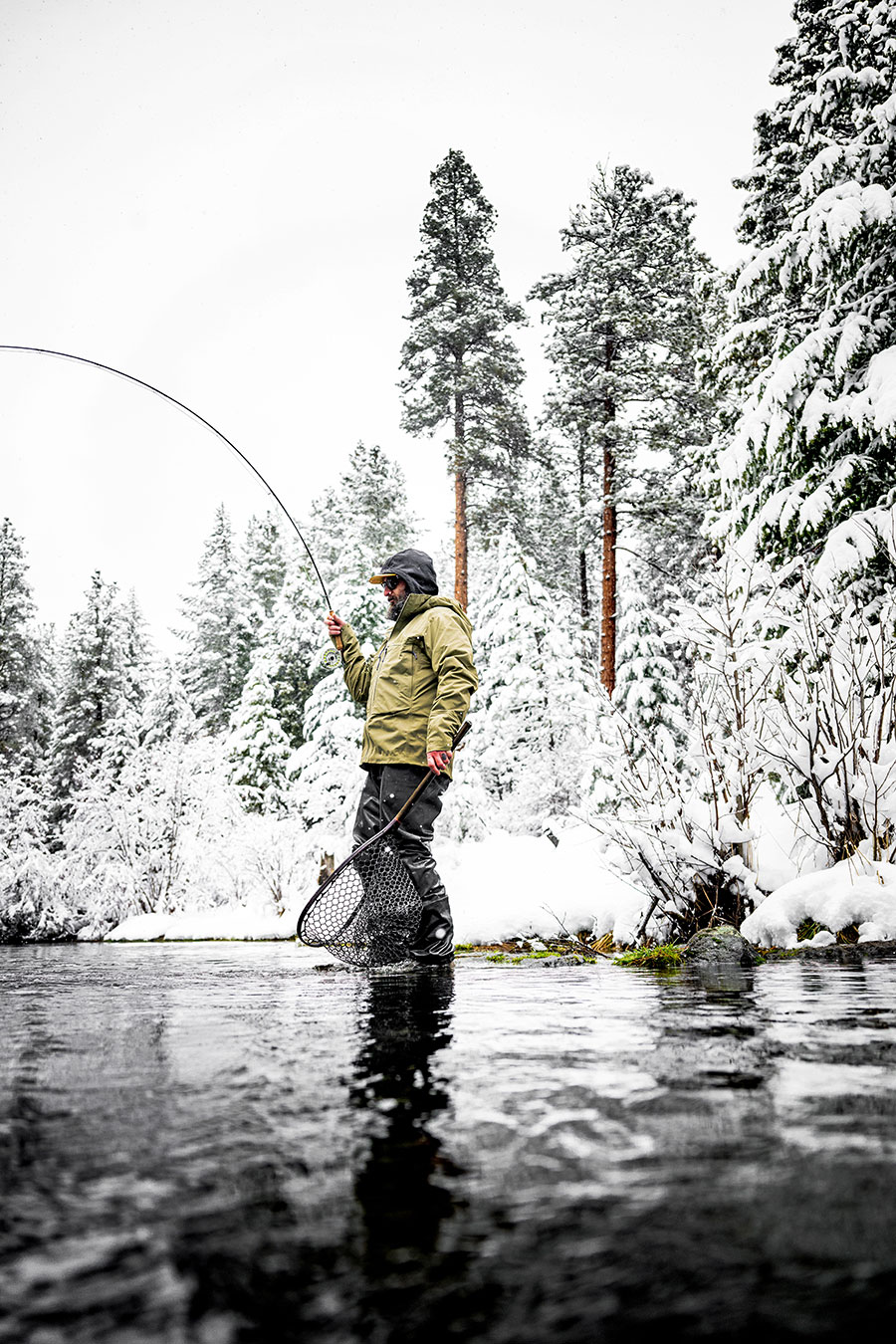
“There’s no bad weather, only bad clothing,” added Davey. She bundles up in fleece under her chest waders, plus uses toe and hand warmers. She may slip traction cleats over her boots for better grip on slippery river banks, but boots with studs are kinder to the river bottom. Anglers fishing on ice-bound lakes should wear a life vest, too. With some planning and fortitude, there are plenty of opportunities to fish on a winter day in Central Oregon. See myodfw.com.

